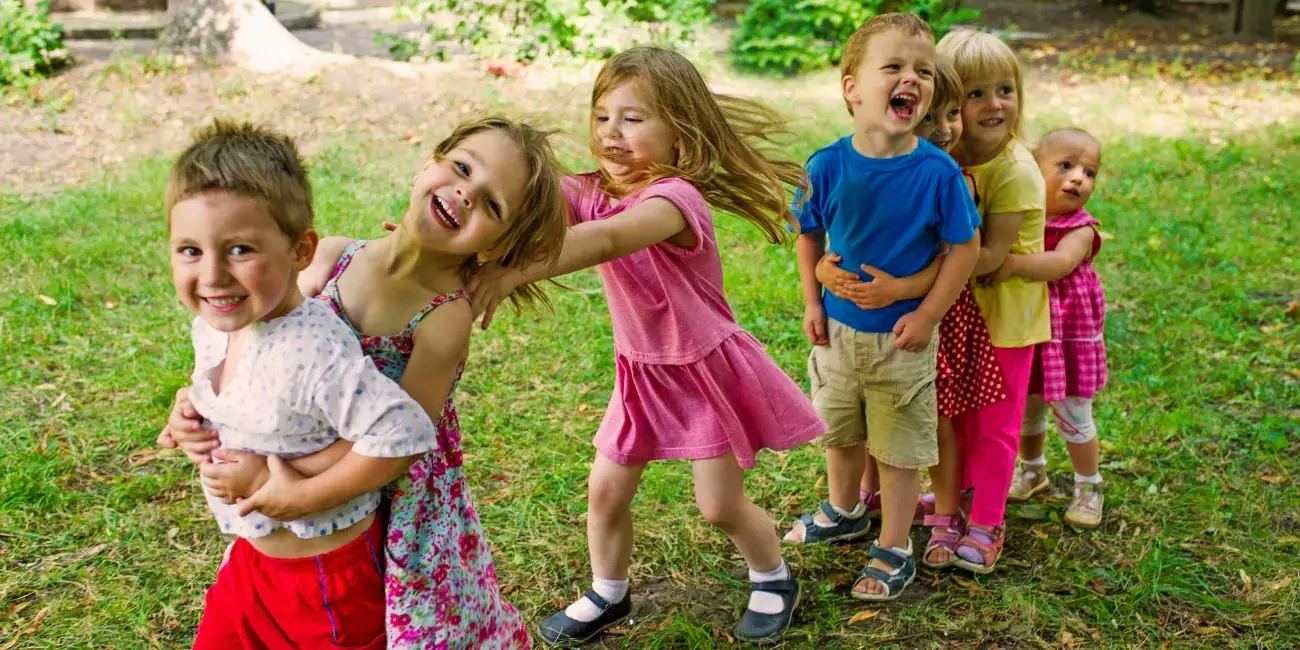Early childhood education and care (ECEC) provides endless opportunities for under-fives to run, jump, skip, crawl, dance, climb and hop, and these muscle movements aren’t just fun and games.
A new Australian study has confirmed that the implementation of a structured physical literacy curriculum in the ECEC setting can improve children’s physical, psychological, social and cognitive abilities.
The Active Early Learning (AEL) project found that a structured physical literacy curriculum has significant benefits for a preschooler’s vocabulary and impulse control, as well as their motor skill development, so let’s look at the AEL project, and its curriculum, in more detail.
What were the objectives of the Active Early Learning project?
Researchers from the University of Canberra Institute for Sport and Exercise partnered with the Australian College of Physical Literacy on the AEL project, with the aim of:
- Developing an Active Early Learning Curriculum specifically for ECEC
- Working with educators and carers to support them to develop and deliver the curriculum within their existing ECEC curriculum
- Sharing useful information with parents about the curriculum and physical literacy, and
- Examining the impact of all this, using randomised controlled trials in a network of early learning centres.
To get the project underway, the researchers recruited 16 long day care centres in South East Queensland to take part in a six month-long study.
The 16 ECEC services were split into two groups (an intervention group and a control group), and AEL coaches visited centres at least once a week to support educators as they incorporated the AEL Curriculum into their service’s existing routines and practices.
What activities does the Active Early Learning Curriculum prescribe?
This physical literacy curriculum is designed to empower early childhood educators and parents to make a positive difference to the health and wellbeing of children in their preschool years and for life.
The AEL Curriculum aligns with The Early Years Learning Framework and National Quality Standards for ECEC, and consists of four units of activity:
- Group time and active transitions. These are short daily movement experiences to develop fundamental movement skill.
- Movement Education. These are group activities and experiences that develop one or more elements of physical literacy.
- Movement Education extensions. These movement experiences relate to other areas of learning such as science, literacy, numeracy, dance and music.
- Challenging play. This free play time encourages children to explore and build their confidence.
Timewise, an ideal Active Play Learning day would involve a child doing:
- One group time activity for five to 15 minutes
- One Movement Education or Movement Education extension activity for 15 to 20 minutes, and
- ‘A daily encouragement’ of challenging play activity.
What was the effect of the Active Early Learning Curriculum on children?
Instead of just looking at the physical effects of this active play, the study measured the effectiveness of the AEL Curriculum on children’s physical, cognitive, social and psychological domains, and found that:
- Children undertaking the AEL Curriculum became more physically active and showed better motor skill development than children in the control group centres, and
- Children following the AEL Curriculum benefitted with enhanced self-control and expressive vocabulary communication.
The researchers say this randomised trial showed, ‘A link between physical literacy and cognitive development via the application of a structured physical literacy program’ in the ECEC setting; and they now have a way to, ‘Boost overall development in young children to better prepare them for school and beyond.’
The researchers hope to publish a full report on the AEL project in early 2021, and in the meantime, the Australian College of Physical Literacy says the AEL Curriculum can help children to be healthier, fitter and smarter.
It links the AEL Curriculum with:
- Improvements in behaviour, with children demonstrating resilience and emotional control
- Increased competence in key movement skills, with children building confidence, self-esteem and enjoyment across a range of physical activities
- Higher levels of engagement in and out of the classroom, with children improving their communication skills, building friendships and playing in small groups
- Improvements in children’s concentration and their ability to focus on one task, and
- Significant improvements in children’s vocabulary and impulse control.
This is all great news for our little ones’ development, and it’s a reminder to amp up the action in their early years – in a way that benefits the body and brain.
References
































